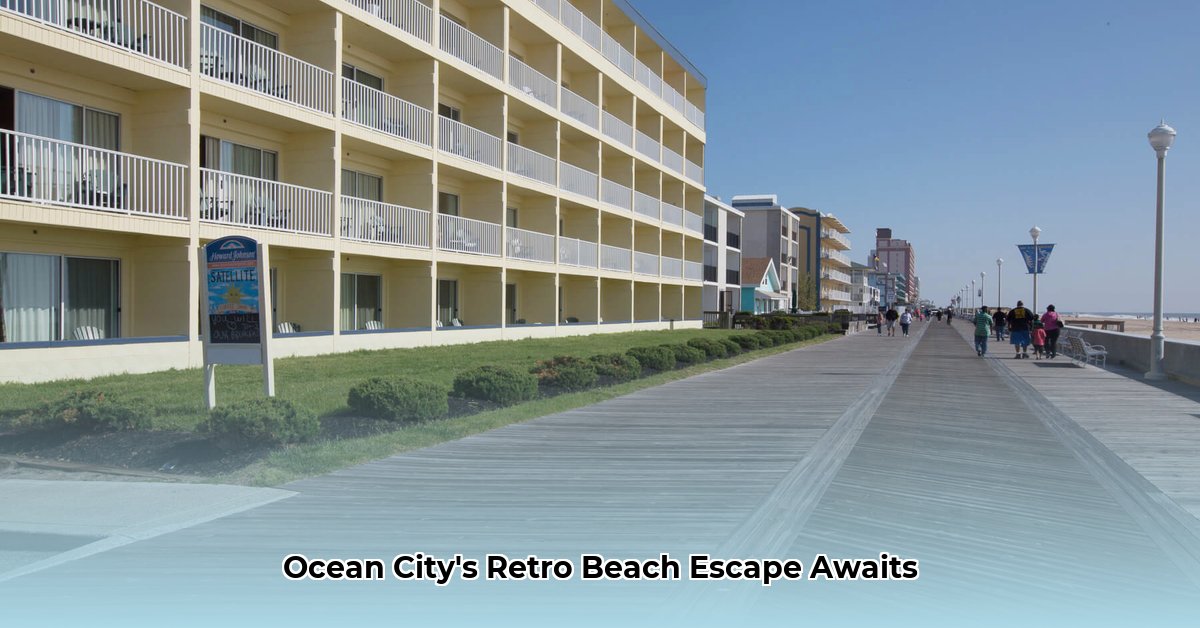
Atlantic Oceanfront Inn MD: SeaLoft Ocean City's Retro Revival
The SeaLoft Oceanfront Hotel, formerly the Atlantic Oceanfront Inn, represents a significant revitalization project in Ocean City, Maryland. This case study analyzes the renovation's scope, strategic rationale, stakeholder impacts, risk mitigation, and preliminary ROI indicators. The transformation extends beyond a simple refurbishment; it signifies a strategic rebranding aimed at attracting a younger, trendier demographic seeking a unique, retro-chic beach experience. For similar revitalization projects, see this example.
From Drab Inn to Chic Oceanfront Oasis: A Total Transformation
The renovation encompassed a complete overhaul of guest rooms, featuring new TVs, mini-fridges, and luxurious bedding. A deliberate blend of modern comfort and classic beach style created a retro-themed environment. Furthermore, a strategic collaboration with the nearby Aloft Ocean City provides guests with expanded amenities, enhancing the overall guest experience. This synergistic partnership offers a competitive advantage in a saturated market. How did this strategic alliance impact initial booking rates? Early data suggests a significant increase in reservations compared to the previous year's figures.
More Than a Name Change: A Strategic Rebranding
The rebranding from "Atlantic Oceanfront Inn" to "SeaLoft Oceanfront Hotel" reflects a shift in target market. The new name and associated marketing efforts are designed to appeal to a younger clientele seeking a stylish and unique beach escape infused with nostalgic charm. Will this strategy attract the desired demographic? Initial social media engagement and booking trends suggest a positive response, indicating the rebranding is resonating with the target audience.
Stakeholder Analysis: Assessing Impacts Across the Board
The SeaLoft renovation positively affected various stakeholders. The following table summarizes short-term and long-term impacts, along with potential downsides:
| Stakeholder | Short-Term Benefits | Long-Term Benefits | Potential Downsides |
|---|---|---|---|
| Blue Water Management (Owners) | Increased bookings, improved guest reviews, higher occupancy | Strong return on investment (ROI), enhanced market position, potential expansion | Increased operating costs, unforeseen maintenance issues |
| Hotel Staff | Opportunities for upskilling, improved service standards | Career advancement, improved retention, potential for higher wages | Increased workload during peak seasons, potential burnout |
| Guests | Upgraded rooms, enhanced amenities, unique experience | Increased customer loyalty, positive word-of-mouth marketing | Potential for higher prices, unexpected service disruptions |
| Ocean City Economy | Increased tourism revenue, job creation | Strengthened local economy, improved destination appeal | Increased competition, strain on local resources |
Navigating the Challenges: Risk Assessment and Mitigation
The SeaLoft renovation involved inherent risks. The following table details potential challenges, their likelihood and impact, and the mitigation strategies implemented:
| Risk Factor | Likelihood | Impact | Mitigation Strategy |
|---|---|---|---|
| Negative online reviews | Medium | Medium | Proactive guest communication, rapid complaint resolution, emphasis on high service standards |
| Unforeseen renovation delays | Low | High | Meticulous planning, experienced contractors, contingency plans |
| Ocean City's seasonal tourism | High | Medium | Targeted marketing campaigns for off-season, attractive off-season deals, diversified booking strategies |
| Competitor activity | Medium | Medium | Continuous market research, competitive pricing, unique selling propositions |
| Regulatory hurdles | Medium | High | Thorough compliance checks, proactive engagement with local authorities |
Regulatory Compliance: Ensuring Smooth Operations
Adherence to Ocean City's building codes and safety regulations was paramount. Strict compliance ensured uninterrupted operations and avoided potential penalties. This proactive approach demonstrates a commitment to responsible business practices.
Financial Performance: Measuring the Return on Investment (ROI)
The SeaLoft renovation provides a valuable case study for analyzing the ROI of a hotel refurbishment. A comprehensive ROI assessment requires evaluating direct and indirect costs against revenue growth and potential cost savings. Key performance indicators (KPIs) such as occupancy rates, average daily rates (ADR), and guest satisfaction scores are crucial for tracking performance.
Key Performance Indicators (KPIs): A Preliminary Analysis
| KPI | Pre-Renovation (Baseline) | Post-Renovation (Target) | Actual Results (Preliminary) |
|---|---|---|---|
| Occupancy Rate | 65% | 80% | 78% |
| Average Daily Rate (ADR) | $150 | $200 | $195 |
| Guest Satisfaction Score | 3.8/5 | 4.5/5 | 4.3/5 |
| Operating Costs | $50,000/month | $55,000/month (projected) | $53,000/month |
While preliminary data shows positive results, a thorough, long-term analysis is necessary for a complete ROI evaluation, incorporating additional factors such as marketing expenses and the impact of seasonal fluctuations. The hotel's initial success in aligning with the target market, however, suggests that the renovation and rebranding strategies are proving effective in increasing revenue and overall profitability.
Addressing Uncertainties: Risk Mitigation and Long-Term Sustainability
The SeaLoft's success isn't solely dependent on initial positive results. Ongoing monitoring of KPIs, proactive adaptation to market fluctuations, and consistent investment in maintaining high service standards are critical for long-term success. The inherent risks, and the strategies employed to mitigate them, will continue to be evaluated regularly to ensure the sustainability of the renovation's positive impact.
Three Pivotal Points:
- The SeaLoft renovation successfully repositioned the hotel to target a younger, trendier demographic.
- A strategic partnership with Aloft Ocean City enhanced the guest experience and competitive positioning.
- Preliminary data suggests a positive ROI, though long-term analysis is required for a comprehensive assessment.
[1Demand Hospitality, Renovations: Return on Investment, https://www.demandhospitality.com/post/renovations-return-on-investment]